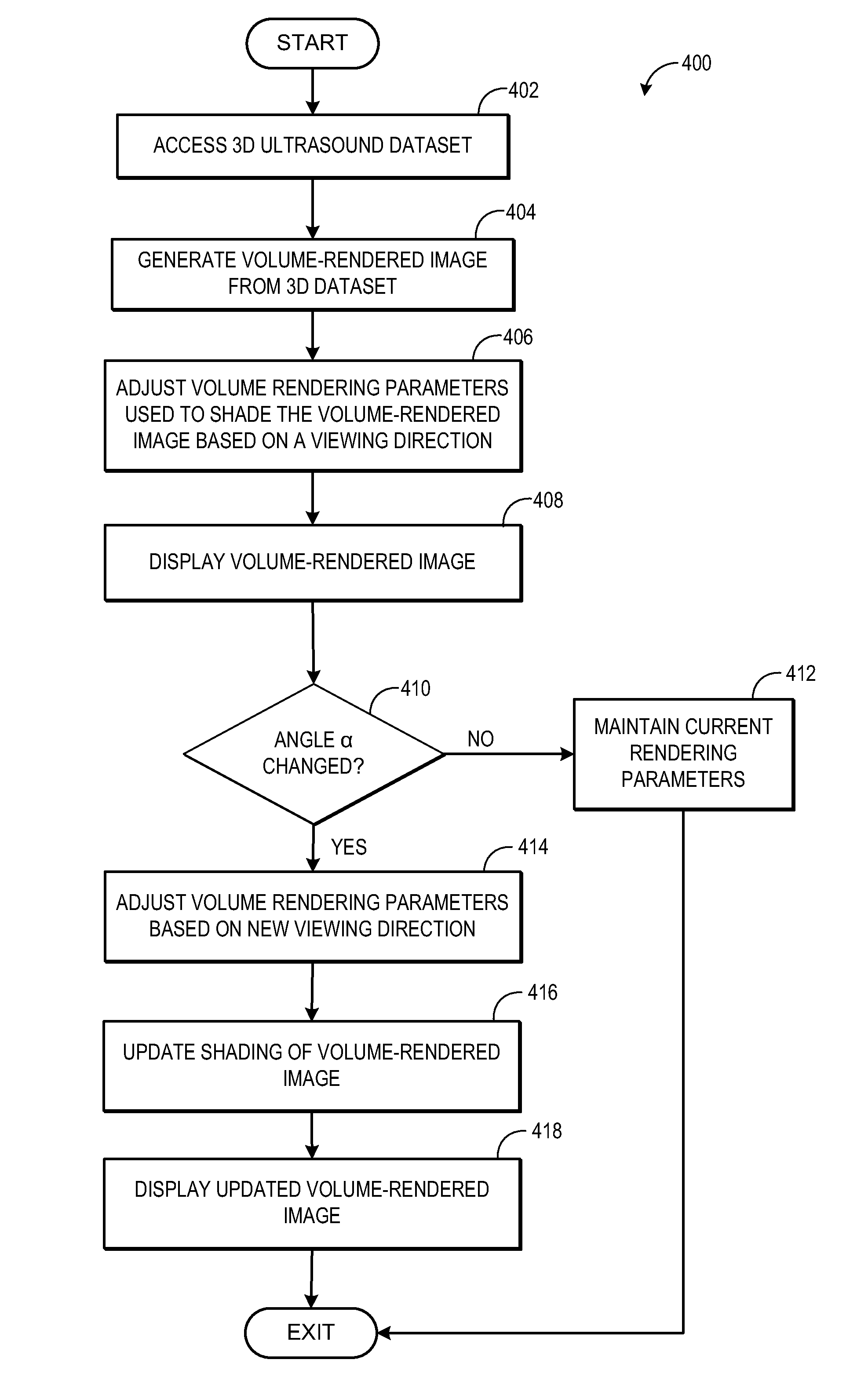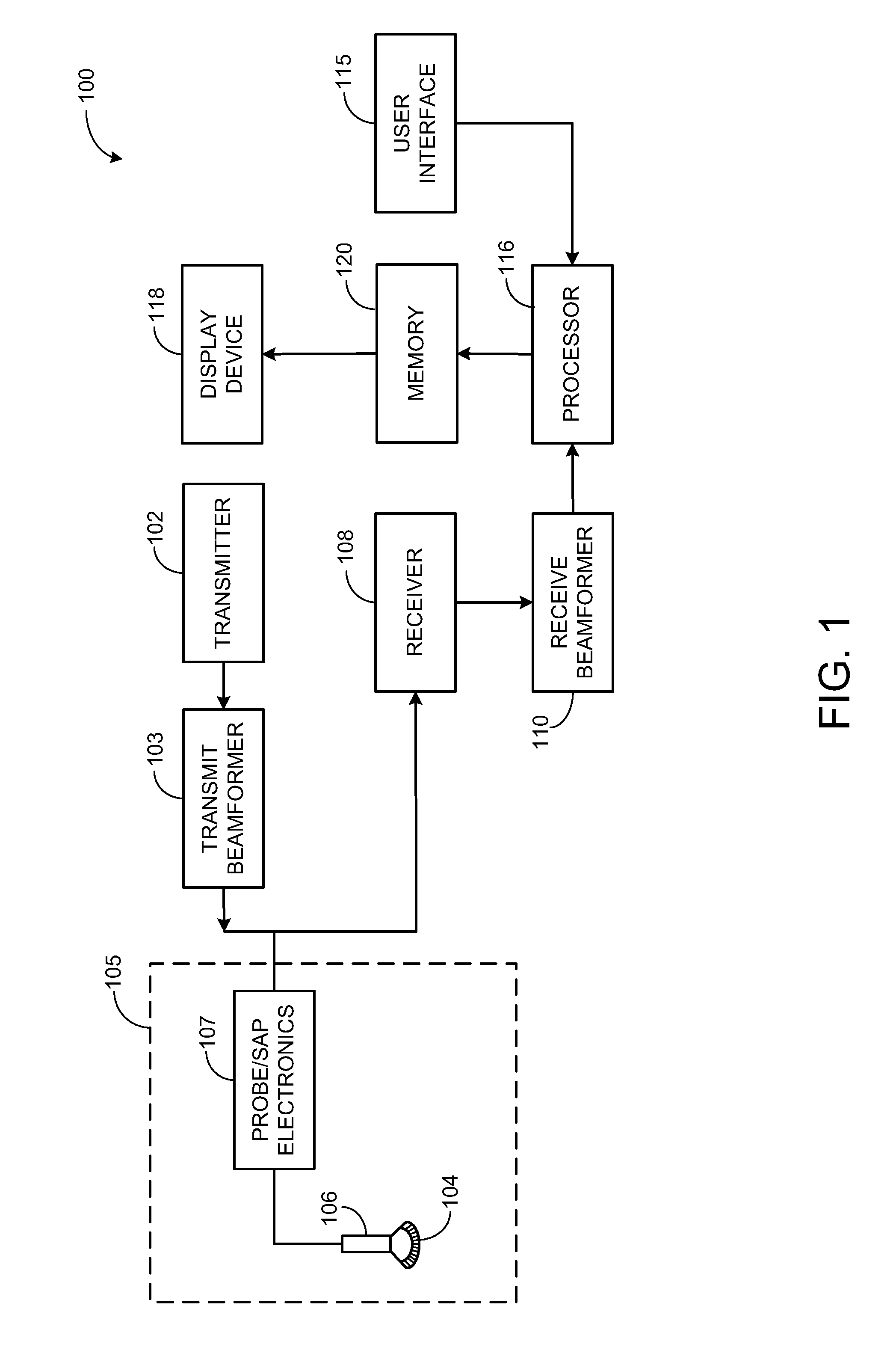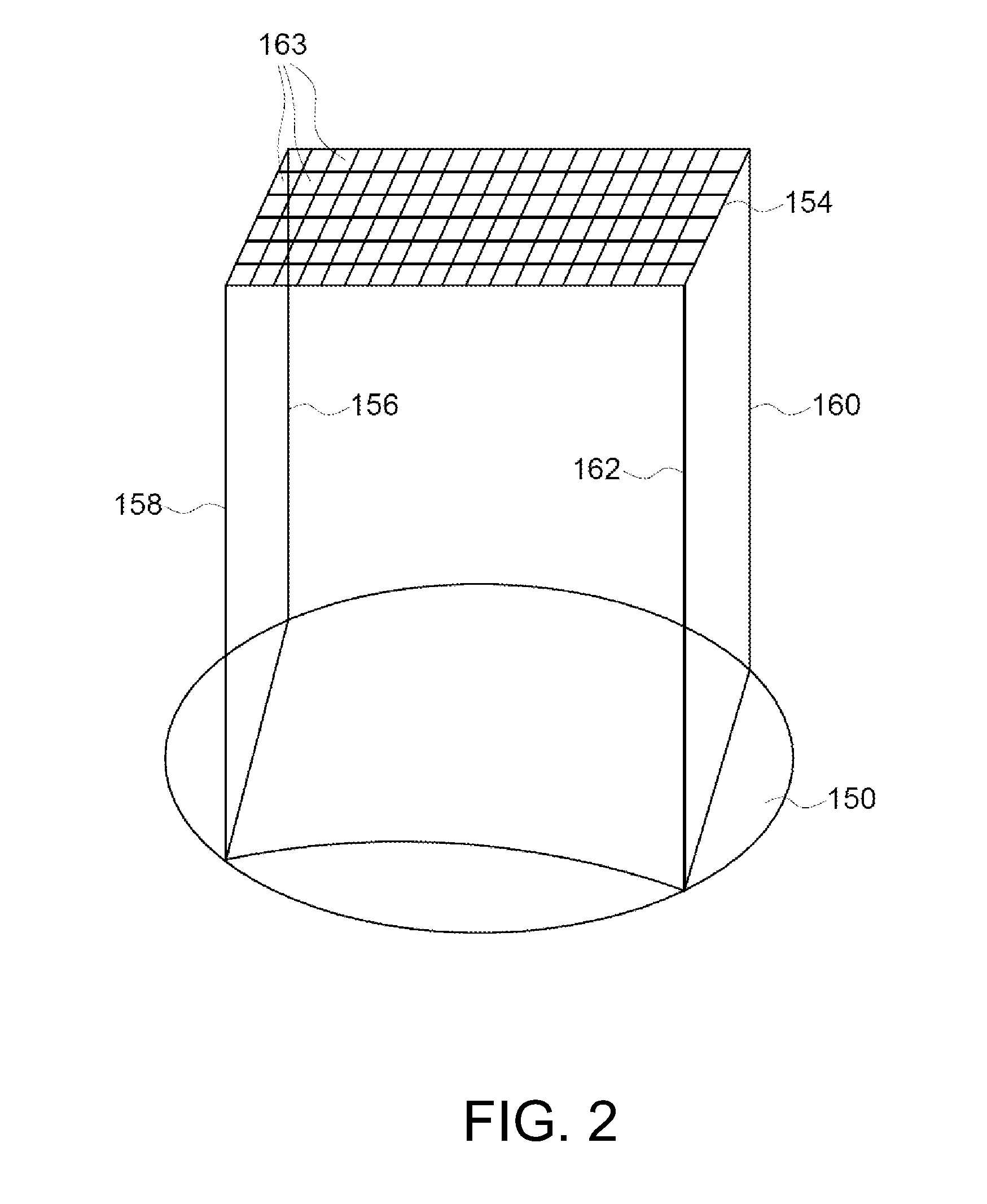Method and systems for shading and shadowing volume-rendered images based on a viewing direction
a volume-rendered image and volume-rendered image technology, applied in image enhancement, instruments, ultrasonic/sonic/infrasonic diagnostics, etc., can solve the problems of affecting the ability of users to make accurate medical diagnoses, affecting the accuracy of medical diagnosis, and affecting the resolution of volume-rendered images
- Summary
- Abstract
- Description
- Claims
- Application Information
AI Technical Summary
Benefits of technology
Problems solved by technology
Method used
Image
Examples
Embodiment Construction
[0011]The following description relates to various embodiments of generating a volume-rendering image with viewing angle-dependent shading and shadowing. An ultrasound imaging system, such as the system shown in FIG. 1 may be used to acquire three-dimensional ultrasound data via a transducer probe. A processor of the ultrasound imaging system may access the three-dimensional ultrasound data and use various techniques, such as the example technique depicted in FIG. 2, to generate a volume-rendered image from the three-dimensional ultrasound data. Shading and shadowing may be used to enhance the volume rendered image. For example, shading and shadowing may be determined based on one or more shading and shadowing parameters such as a light source position, light source strength, and light attenuation. However, due to the nature of the ultrasound data (e.g., due to the anisotropic nature of the ultrasound imaging system), the volume resolution of the volume-rendered image is anisotropic...
PUM
 Login to View More
Login to View More Abstract
Description
Claims
Application Information
 Login to View More
Login to View More - R&D
- Intellectual Property
- Life Sciences
- Materials
- Tech Scout
- Unparalleled Data Quality
- Higher Quality Content
- 60% Fewer Hallucinations
Browse by: Latest US Patents, China's latest patents, Technical Efficacy Thesaurus, Application Domain, Technology Topic, Popular Technical Reports.
© 2025 PatSnap. All rights reserved.Legal|Privacy policy|Modern Slavery Act Transparency Statement|Sitemap|About US| Contact US: help@patsnap.com



